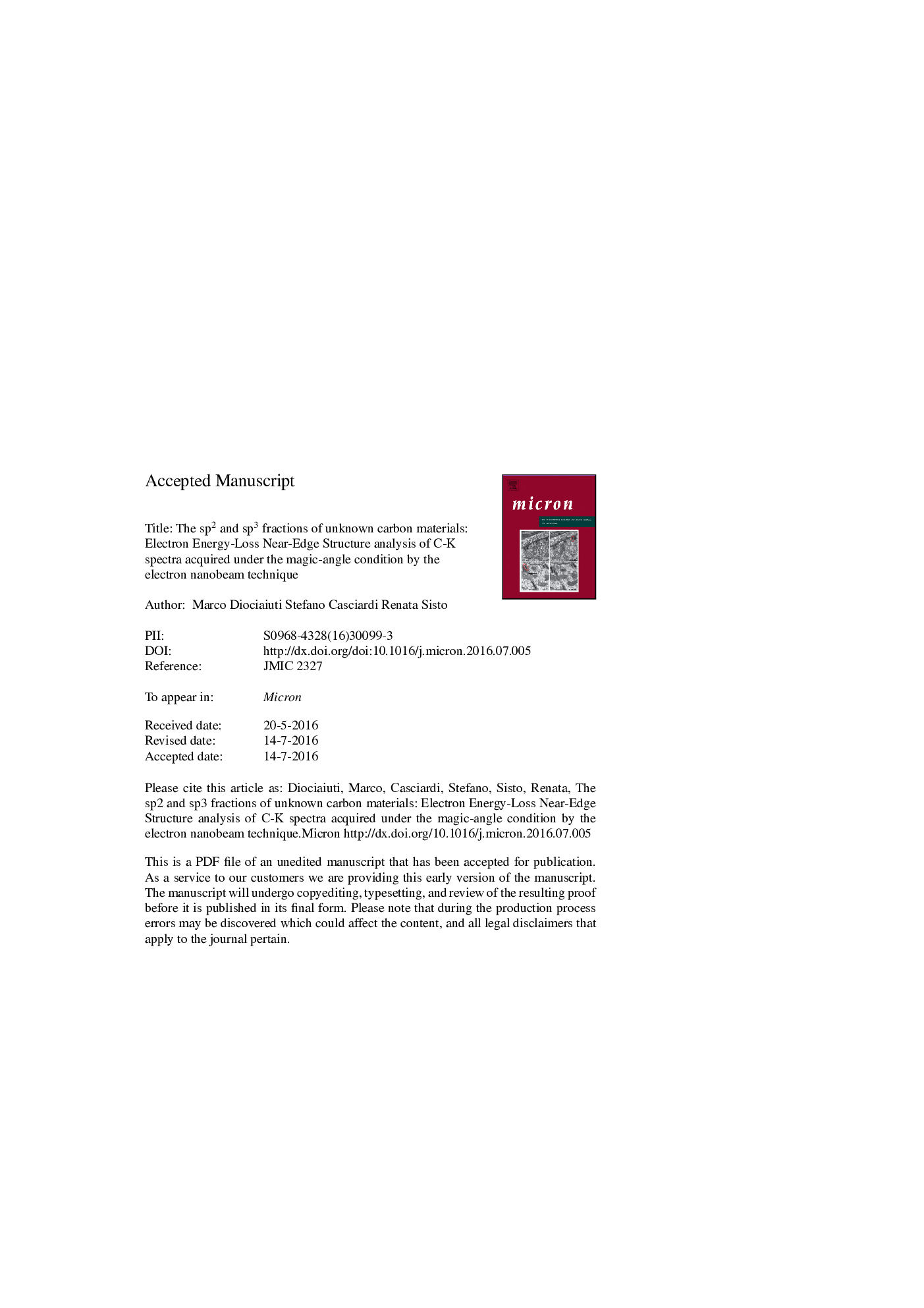| Article ID | Journal | Published Year | Pages | File Type |
|---|---|---|---|---|
| 7986375 | Micron | 2016 | 38 Pages |
Abstract
A method is described for the quantification of the sp2, sp3 and intermediate hybridizations in several carbon (C) material samples. Electron energy-loss near-edge spectra were acquired using fast electrons (120 keV) in an electron microscope in nanobeam configuration under the so-called ”magic-angle” condition, and were analysed to extract the sp2 and sp3 fractions, and identify the possible mixed sp2+ε hybridizations. The method consists in projecting the unknown spectra on a basis made up of pure sp2 and sp3 spectra, obtained under the same experimental conditions from graphite and diamond crystals, respectively. The residual spectra contain information about the intermediate hybridizations sp2+ε occurring in the samples. The method was successfully tested on “ab initio” numerically generated spectra relative to amorphous C materials. Finally, it was applied to actual C amorphous and pyrolytic samples, and results were compared to those obtained by the most commonly used, conventional ”three-Gaussian” method. The combined application of electron diffraction and spectroscopy, in the nanobeam configuration, yielded useful information about the atomic and electronic structure from very small volumes of the unknown C material.
Keywords
Related Topics
Physical Sciences and Engineering
Materials Science
Materials Science (General)
Authors
Marco Diociaiuti, Stefano Casciardi, Renata Sisto,
